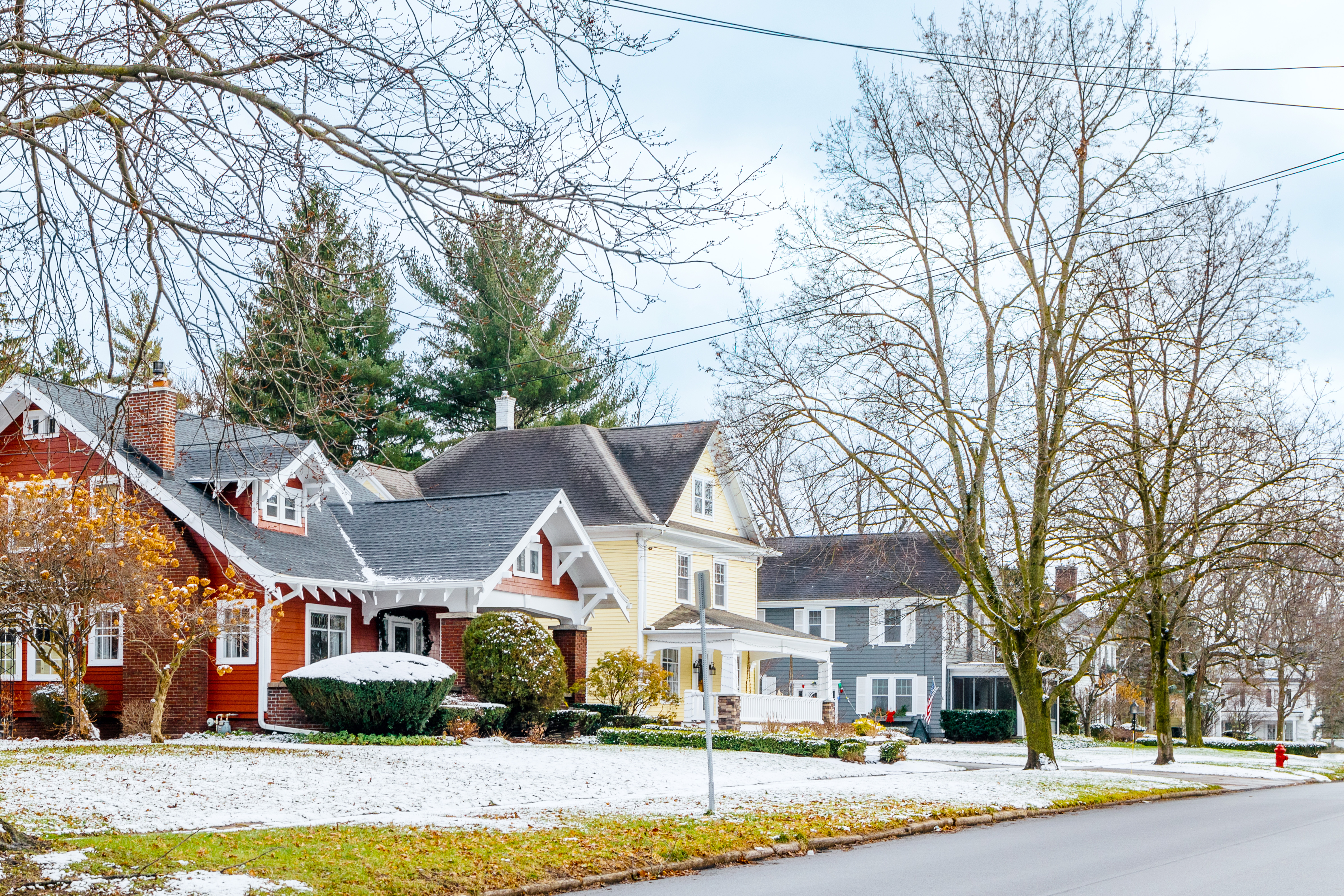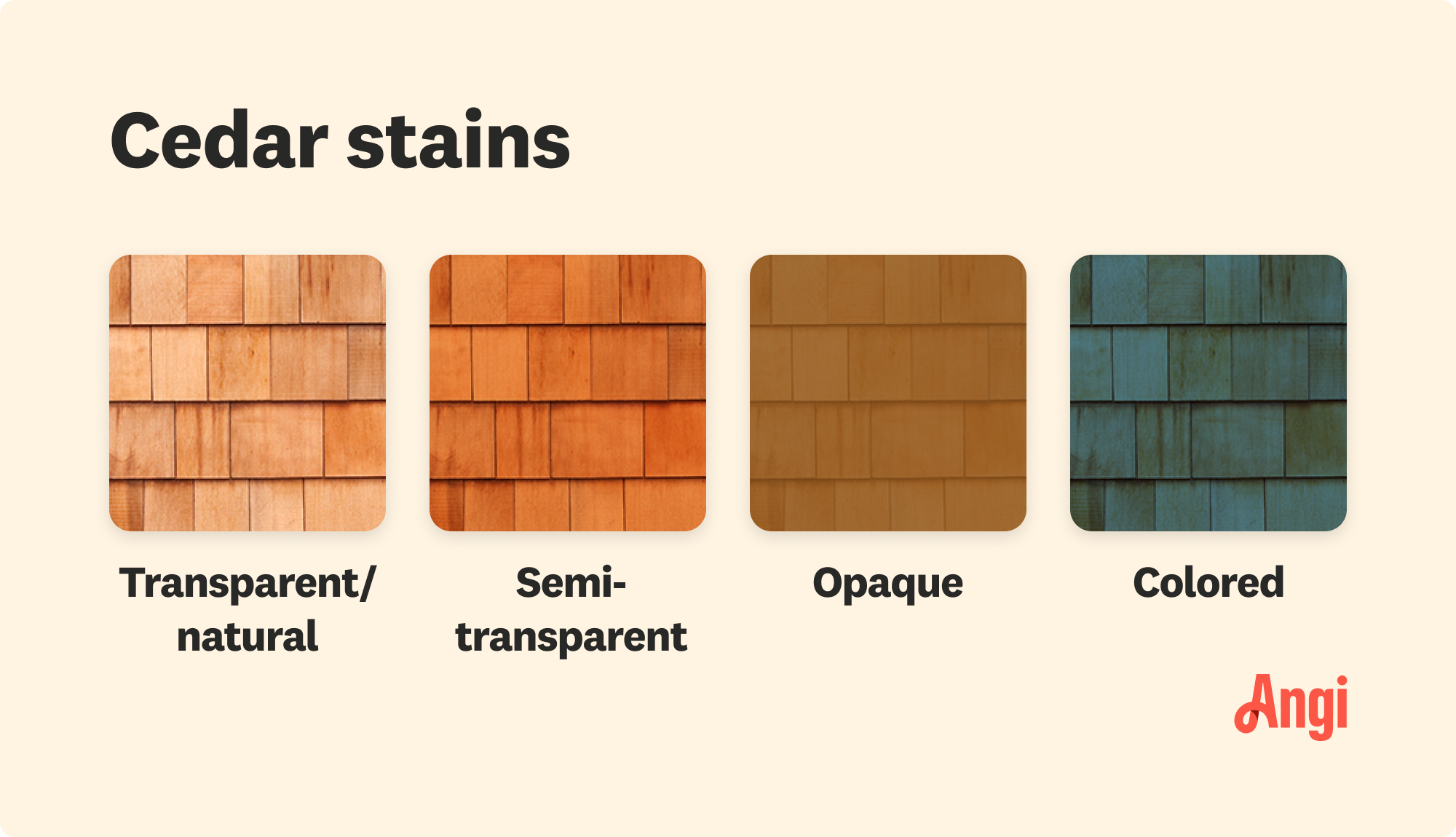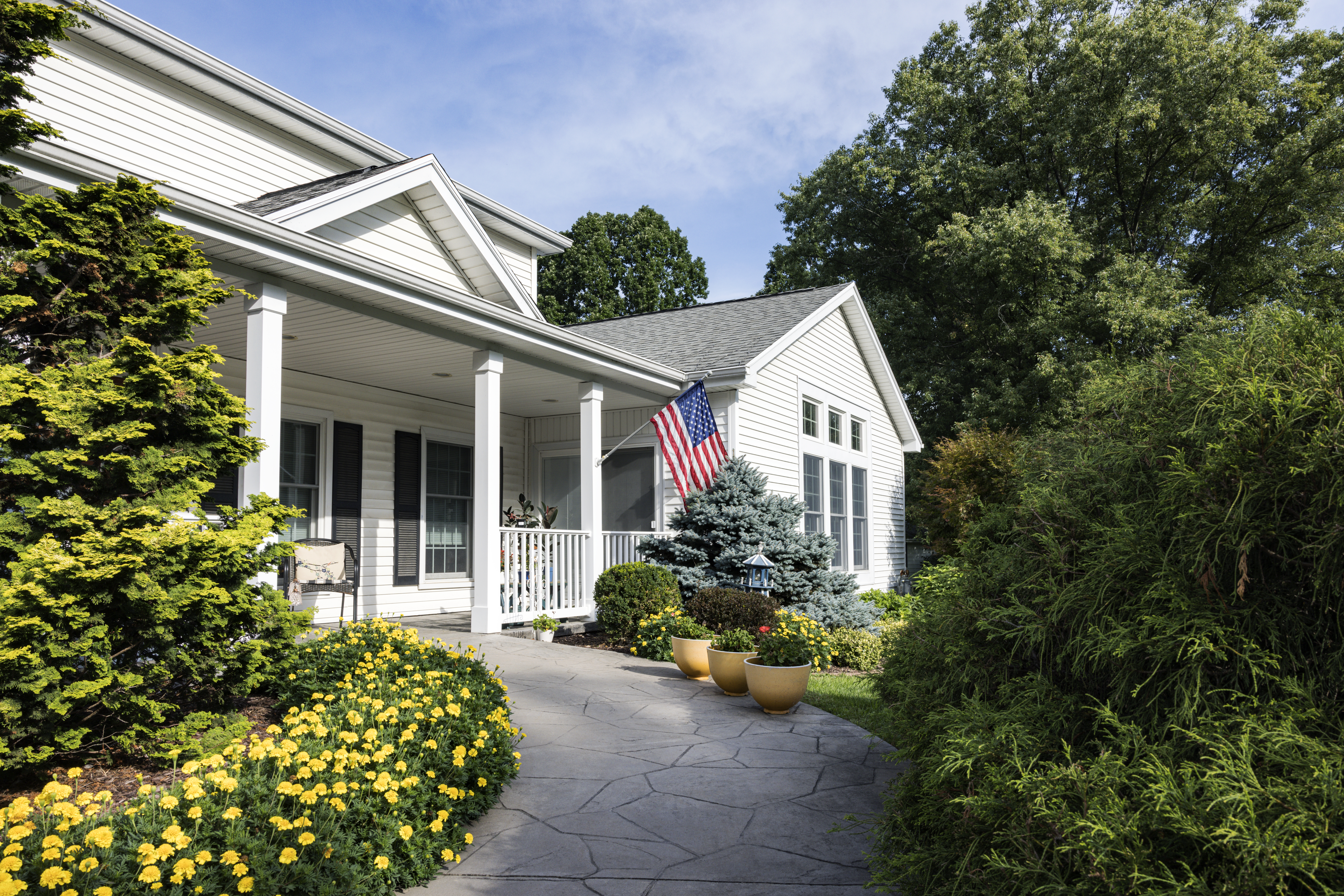
Siding repairs offer much-needed protection against New York's heavy snowfall and harsh winters. Learn about siding repair costs in New York.
Cedar siding costs $13,600 on average, and most homeowners pay between $8,500 and $18,700. Your home size and the specific cedar species you choose are the most important cost factors to consider.


Expect to pay between $5 and $11 per square foot for cedar siding costs, or up to $30 per square foot for more exotic cedar species.
Home size and the species of cedar will affect costs more than any other factor.
Cedar siding requires routine maintenance, so budget for ongoing costs in addition to installation.
Treating cedar siding for protection from fire, water, and pests will add about $3,400 to your total.
The average cost to install cedar siding on a 2,000-square-foot home is $13,600. Most homeowners pay between $8,500 and $18,700. Your total could sit as low as $6,000 for an affordable cedar species on a 1,000-square-foot home, but can climb as high as $66,000 for a more unique species on a 3,000-square-foot house. Expect to pay an average of $8 per square foot for materials and labor.
Cedar siding costs between $5 and $11 per square foot, on average. Since you’ll be paying per square foot or per siding square (100 square feet), your wood siding costs will depend mostly on the size of your home.
Many homeowners just install cedar on the front of a home to boost curb appeal and save on total installation costs. The average U.S. home is 2,000 square feet with two stories and has a front face that measures 640 square feet. Buying and installing cedar siding to cover just the front of this home will cost between $3,200 and $7,100.
If you’re looking to add cedar siding to the entirety of a 2,000-square-foot home, you’ll pay between $8,500 and $18,700. Here’s the estimated cost of cedar siding based on home size:
| Home Square Footage | Average Cost Range for Front of Home Only | Average Cost Range for Entire Home |
|---|---|---|
| 1,000 | $1,600–$3,600 | $6,000–$13,200 |
| 1,500 | $2,400–$5,400 | $12,800–$28,000 |
| 2,000 | $3,200–$7,100 | $8,500–$18,700 |
| 2,500 | $4,000–$9,000 | $9,800-$21,500 |
| 3,000 | $4,800–$10,800 | $11,000–$24,200 |

The type of cedar you select for your siding significantly affects your overall costs. A standard cedar species that grows abundantly in the U.S., like Eastern red cedar or Western red cedar, will be the most affordable option. Less prevalent and non-native species, like Spanish cedar and Alaskan yellow cedar, can cost up to twice as much per square foot.
Here’s how the cost to install cedar siding varies based on species:
| Cedar Species | Average Cost per Sq. Ft. |
|---|---|
| Alaskan yellow | $9–$11 |
| Eastern | $5–$8 |
| Spanish | $6–$10 |
| Western | $3–$5 |
The type of wood siding you choose is another important factor that can affect material and labor costs. The classic “lap styles” of siding, like clapboard and tongue and groove, are the easiest to install and fall within the average price ranges per square foot. Board and batten, shingles, and cedar shakes are more expensive because they take longer to install.
Here’s how cedar siding style affects the average cost:
| Style | Average Cost (per Sq. Ft.) |
|---|---|
| Clapboard | $5–$7 |
| Shiplap | $5–$6 |
| Tongue and Groove | $5–$7 |
| Board and Batten | $6–$10 |
| Shakes/Shingles | $7–$11 |
Your location also impacts cedar siding installation costs, partly due to material availability. For example, western red cedar is more abundant on the West Coast, so it’ll be less expensive there, given the easier transportation. Consider choosing a species native to your region for cost-effectiveness.
What’s more, a contractor's hourly rate or per-square-foot price will depend on the cost of living in an area. It will be higher in more populated locations (like New York and California) and lower in rural areas.
Here’s how the cost to install cedar siding might vary in different locations, including labor and materials:
| Location | Average Cedar Siding Cost (per Square Foot) |
|---|---|
| Arizona | $5–$6 |
| California | $8–$16 |
| Colorado | $7–$13 |
| Florida | $7–$12 |
| Indiana | $6–$11 |
| Louisiana | $7–$13 |
| Michigan | $6.50–$11.50 |
| New York | $8–$17 |
| Texas | $7–$14 |
Other factors can also influence the cost to install cedar siding, including wood grade, existing siding removal, moisture treatment, and staining or painting costs.
Labor accounts for between 40% and 60% of your total installation costs, or between $5,500 and $8,200, on average. For siding styles like cedar shakes, material costs tend to be lower, but labor costs will push toward the higher end of this range because your contractor will need to install small shingles individually. Lap siding will come with lower labor costs because it’s easier and faster to install, but material costs are higher.
Cedar, like other woods, has grades to indicate its quality and appearance. Grading in the lumber industry is unregulated and complex, and different types of wood can have their own grading system. Regardless of your supplier, though, premium lumber will cost more but provide better curb appeal.
Below are some factors to look out for when it comes to cedar siding grading:
| Cedar Siding Grade | Examples | Average Cost Range (per Square Foot) | Pros | Cons |
|---|---|---|---|---|
| Clear | Clear Vertical Grain Heartwood, Clear All Heart, A Clear | $10–$30 | Highest quality, often from older and mature growth; free from defects like knots; modern aesthetic | Most expensive form of cedar siding |
| Mid | “C and Better” or “D and Better” | $5–$11 | Rustic look of knots with better performance and consistent visual quality; widely available; less expensive than premium options | Not as visually refined; may have visible knots or color variation |
| Knotty | Select Tight Knot, Architect Knotty, Standard & Better | $4–$8 | Provides a rustic appearance due to its knots and natural imperfections; the most affordable option; naturally durable | Knots might sometimes loosen, crack, or fall out over time; they can have a less uniform color and grain pattern |
Expect to pay between $1,000 and $3,000 for professionals to remove existing siding and haul it away. You’ll pay closer to the lower end for easy-to-remove vinyl siding, while removing stucco will cost closer to the higher end.
You can DIY siding removal to save money, but you’ll still need to pay to dump the material. Junk removal costs between $240 and $500 for siding, depending on the amount and type.
A note on safety: If you have siding that was installed before 1978, you might have lead paint or asbestos. If you have concerns about either of these factors, get a professional lead or asbestos inspection. Asbestos testing costs from $230 to $785, and lead tests are around $300 (get quotes from multiple lead testers near you before moving forward). If either is present, it’s best to have them professionally removed.

The cost to stain cedar siding ranges from $2 to $5 per square foot, and painting totals between $3 and $6 per square foot for materials and labor.
Staining or painting wood siding can significantly increase its longevity and give it a finished, more refined appearance. You can purchase cedar siding already finished, but if you buy untreated siding, you’ll need to finish it before or after installation.
Cedar is more resilient to moisture and mold than most other wood species, but it’s still a good idea to treat your siding to stand up better to the elements. You’ll pay between $1 and $4.50 per square foot for applications that protect against water, mold, insects, and fire. For a standard 2,000-square-foot home, these treatments can total between $1,700 and $7,700.
Houses with more windows and doors require more work when it comes to siding installation, as the contractor will need to cut and install trim around each opening. It also requires a little more work when installing the waterproof barrier beneath the exposed siding. This can increase overall labor costs, but the total added to your price shouldn’t exceed $1,000.
Cedar siding requires more maintenance than most other types, so it’s a good idea to budget for long-term maintenance costs to keep your home protected and looking clean. Here’s what to expect for cedar siding maintenance costs:
| Maintenance Type | Frequency | Average Cost Range |
|---|---|---|
| Fireproofing | Once | $2,000–$5,000 |
| Painting/staining | Every 4-6 years | $3,000–$10,500 |
| Power washing | Every year | $200–$500 |
| Repairs | As needed | $650–$2,700 |
| Sealing | Every 3-5 years | $200–$500 |
On average, installing cedar siding yourself on a 2,000-square-foot home that requires around 1,700 square feet of materials can save between $5,500 and $8,200.
But although it’s possible to install cedar siding without the help of a professional, it’s time-consuming and requires a high level of skill. If you don’t fasten the siding properly, have improper spacing, or have problems with flashing or caulking, you could have issues further down the road, including leaks and water damage, leading to an expensive and inconvenient fix.
It’s best to hire a local siding professional to make sure everything is secured and waterproofed properly. Going with a pro will also ensure maximum curb appeal for years to come.
If you already have cedar siding on your home, you’ll need to decide if it’s a better idea to repair what’s there or replace it. Siding repair costs between $4 and $13 per square foot for cedar, on average, so the cost of repair is similar to the cost of replacement on a per-square-foot basis.
For small sections of siding that are damaged or worn, repair is a much more affordable option. However, cedar changes appearance as it ages, and your new siding won’t match. For maximum curb appeal, full replacement is a better option.
Before you hire a siding pro, ask for repair and replacement estimates. Replacement is probably best if your old siding is reaching its useful lifespan or if repairs cost more than 50% of a total replacement.
| Factor | Repair | Replace |
|---|---|---|
| Cost of repairs vs. replacement | Repair cost is under 30% of replacement | Repair cost is 50% or higher than replacement |
| Age of siding | Siding is 10-15 years old | Siding is 25+ years old |
| Siding condition | Siding still adds to curb appeal | Siding is badly faded or moldy |
| Water damage | Few areas where water intrusion occurs | Extensive water damage or mold growth |
| Cracks or splits | A few cracks with no water damage | Many cracks and resulting water damage |
Yes, cedar siding will add value to your home, and it provides an average ROI of 70%, which is standard for all new siding projects. Given the average cost to install cedar siding, you can expect a value bump of $9,500.
The ROI you’ll see from cedar siding depends heavily on your location. Cedar is more resilient to water damage and mold growth than other species, but buyers in areas with high humidity and heavy rainfall may see wood siding as more of a liability than an asset. Similarly, wood siding is highly combustible, so buyers may shy away from it in areas prone to wildfires. In these cases, your ROI could be significantly lower based on buyer appeal.
Wood siding can cost more than stucco, vinyl, engineered wood, brick veneer, and certain metal siding options. But if you love the traditional look of cedar shakes or lap siding, you can use the following tips to keep prices down and close that cost gap a bit.
Choose an affordable species of cedar. Opting for a cedar species that grows in your area can save you thousands. For example, a local Eastern cedar or Western cedar can cost half what you’d pay for Alaskan yellow or Spanish cedar.
Install cedar just on the front of your home. For a standard 2,000-square-foot house, you’ll save an average of $8,400. However, you may also need to factor in the cost of replacing siding on the sides and rear of your home.
Remove the old siding yourself. Removing old siding before your contractor comes to install new cedar siding will save an average of $2,000, minus the dumping fees in your area.
DIY painting and staining. Painting and staining cedar yourself is time-consuming, but you’ll save between $2 and $6 per square foot, or between $3,400 and $10,200 total for a 2,000-square-foot home.
Home is the most important place on earth, which is why Angi has helped more than 150 million homeowners transform their houses into homes they adore. To help homeowners with their next project, Angi provides readers with the most accurate cost data and upholds strict editorial standards. We extensively research project costs to develop the pricing data you see, so you can make the best decisions for you and your home. We rely on reputable sources, including the U.S. Bureau of Labor Statistics, academic journals, market studies, and interviews with industry experts—all to ensure our prices reflect real-world projects.
Want to help us improve our cost data? Send us a recent project quote to [email protected]. Quotes and personal information will not be shared publicly.
From average costs to expert advice, get all the answers you need to get your job done.

Siding repairs offer much-needed protection against New York's heavy snowfall and harsh winters. Learn about siding repair costs in New York.

New siding in New York improves a home's aesthetic and provides important insulation and protection against snowfall and rain. Learn about average siding replacement costs throughout New York.

Vinyl siding can give your home a fresh look and feel. Learn how much vinyl siding installation costs in NYC based on factors like home size and siding type.

Want to learn how to install vinyl siding on a house? Keep reading for insight into the whole process from start to finish.

If you have woodpeckers pecking on your house, you may be at your wit's end. Read this to learn how to stop woodpeckers from pecking your house.

Learn to identify the warning signs of siding damage like rot, pest infestation, and mold growth, and learn what to do to protect your home’s exterior.